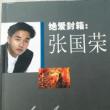
全新正版 固态磁性导论 (奥)莫翰 9787510050466 世界图书出版公司
本店所售图书,保证正版新书,有个别图片和实书封面不一样,以实书封面为准,最快当天,一般隔天发货。支持7天无理由退换货.开票联系客服
¥ 21.11 5.4折 ¥ 39 全新
库存2件
北京西城
认证卖家担保交易快速发货售后保障
作者(奥)莫翰
出版社世界图书出版公司
ISBN9787510050466
出版时间2013-01
装帧其他
开本其他
定价39元
货号2423120
上书时间2023-03-01
- 最新上架
商品详情
- 品相描述:全新
- 商品描述
-
目录
1. A Historical Introduction
2. Consequences ofFermi Statistics
2.1 Quantum Statistics of Fermions
2.2 Free Energy of the Fermi Gas
3. Paramagnetism
4. Energy Bands in the Crystal
5. Experimental Basis of Ferromagnetism
5.1 Nickel Alloys
5.2 Iron Alloys
5.3 Palladium Alloys
5.4 Iron-Nickel Alloys
5.5 Effects of Strong Magnetic Fields
5.6 Effects of High Pressure
5.7 Effects of Finite Temperature
5.8 Susceptibility above Tc
5.8.1 Susceptibility of “Classical Spins”
5.9 Critical. Exponents
5.10 Neutron Diffraction
5.11 Further Experimental Methods
6. Weiss Molecular Field Model
6.1 Rhodes-Wohlfarth Plot
7. Heisenberg Model
7.1 Magnon Operators
7.2 Heisenberg Hamiltonian in Magnon Variables
7.3 Magnon Dispersion Relation
7.3.1 Specific Heat of Magnons
7.3.2 Ordering Temperature
7.4 Approximations for the Heisenberg Model
7.4.1 Ising Model
7.4.2 XY Model
7.4.3 Mean Field Solutions of the Heisenberg Model
8. Itinerant Electrons at O K
8.1 Pauli Susceptibility of the Itinerant Electrons
8.2 Susceptibility of the Interacting Itinerant Electrons
8.3 Non linear Effects
8.4 Effects of IIigh Fields at O K
8.4.1 Non-magnetic Limit
8.4.2 Strong Ferromagnets
8.4.3 Weak Ferromagnets
8.4.4 bcc Iron and hcp Cobalt
8.4.5 Extremely High Fields
8.4.6 Metamagnetism
8.5 Susceptibility of Paramagnetic Alloys
9. Band Gap Theory of Strong Ferromagnetism
9.1 Magnetism of Alloys
10. Magnetism and the Crystal Structure——Covalent Magnetism
10.1 Crystal Structure of Mn,Fe,Co,and Ni
10.2 Covalent Magnetism
10.3 Covalent Polarization
11. Magnetic Impurities in an Electron Gas
11.1 Impurity Potential in the Jellium
11.2 Strong Perturbations in the Jellium
11.3 Layer and Line Defects
11.4 Magnetic Impurities and Oscillations of the Magnetization
12. Itinerant Electrons at T〉O: A Historical Survey
12.1 Excitations at Low Temperatures
12.1.1 Strongly Ferromagnetic Systems
12.1.2 Weakly Ferromagnetic Systems
12.2 Stoner Theory for a Rectangular Band
12.3 Weak Excitations with ζ〈〈1
13. Hubbard Model
13.1 Beyond Hartree-Fock
14. Landau Theory for the Stoner Model
14.1 General Considerations
14.2 Application to the Stoner Model
15. Coupling Between Itinerant and Localized Moments
16. Origin of the Molecular Field
16.1 Heitler-London Theory for the Exchange Field
16.1.1 Magnetism of a Spin Cluster
16.1.2 Spinwaves for Localized Electrons
17. Exchange and Correlation in Metals
17.1 Free Electron Gas
17.2 Tightly Bound Electrons
18. Spin Fluctuations
18.1 Fluctuations of a Thermodynamical Variable
18.2 Fluctuations of the Magnetic Moment
18.3 Specific Heat of the Spin Fluctuations
18.4 Magneto-Volume Coupling
18.5 Applications of the Spin Fluctuation Model
18.6 Comparing the Spin-Fluctuation and the Stoner-Model
19. Single Particle Excitations Versus Spin Waves
20. Landau-Ginzburg Model for Spin Fluctuations
21. Conclusion and Lookout
A. Appendices
A. Convexity Property of the Free Energy
B. Derivation of the Coefficient a in (3.17)
C. Quenching of the Orbital Momentum
D. Properties of “Classical” Spins
E. Derivation of the Constant c in (8.24)
F. Ornstein-Zernicke Extension
G. Bogoliubov-Peierls-Feynman Inequality
H. The Factor 2 in Equation (7.27)
I. Hund‘s Rules
J. Polynomial Coefficients in (18.12)
K. Conversion Between Magnetic Units
References
Index
相关推荐
— 没有更多了 —







![全新正版 别插手,让孩子自立的家务课 [日]辰巳渚著;宋天涛译 9787111655947 机械工业出版社](https://www0.kfzimg.com/sw/kfz-cos/kfzimg/aedcbdff/16d73c4437100491_s.jpg)






以下为对购买帮助不大的评价